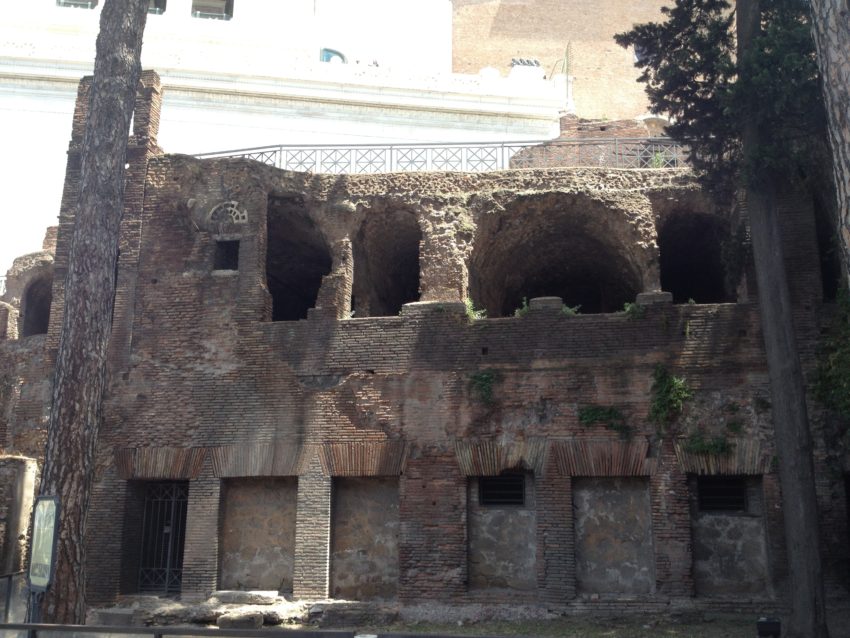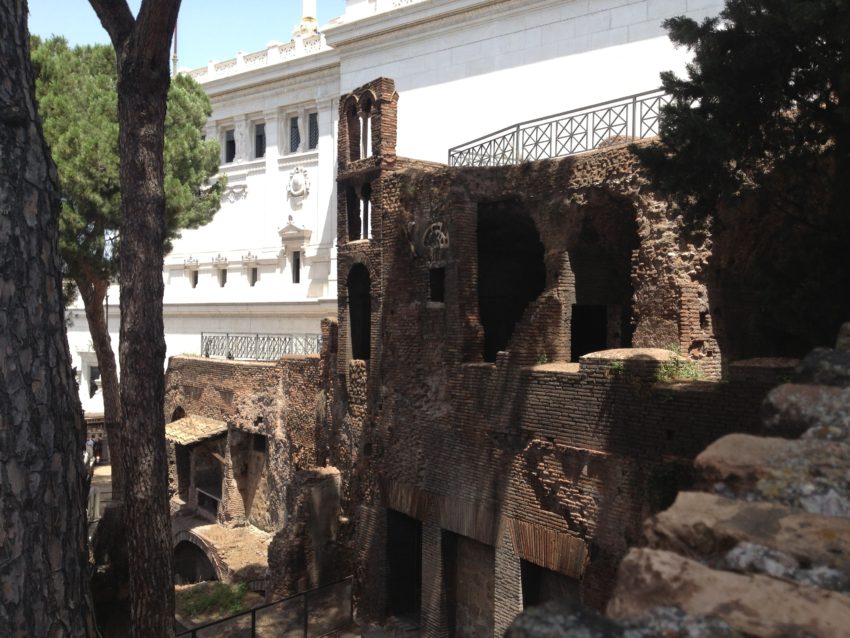Retired in Rome Journal: Ghetto of Ancient Rome still visible in the shadow of Prada


 A fresco showing Christ descending from the cross.
A fresco showing Christ descending from the cross.
JUNE 25
I went sightseeing in Rome Tuesday. It’s not easy to find something new in a city you’ve lived in nearly two years, especially now when fedora-wearing tourists pack steaming streets that are starting to bake like country lasagna. I have a secret interest when I travel. I like to see where the poor live. I like getting out of my comfort zone and into a danger zone. I want to see what the living conditions are like for the less fortunate, places that my class aren’t willing to see. My head was on a swivel when I drove through South Central L.A. once on assignment chasing a high school basketball star. I actually enjoyed walking through South Bronx interviewing locals about George Steinbrenner. When I went to Haiti, I asked a cab driver to take me to Port-au-Prince’s shanty town, a sprawling inner city covered in aluminum siding. He wouldn’t. But a couple of ex-Club Med employees in Rio de Janeiro took me on their favela tour.
In Rome, I stepped back in history to see the poor. I stepped back nearly 2,000 years. You can do that in a city where ancient history is on every street, from Dorian columns to drinking fountains fed by the original aqueducts. Beside the gargantuan Vittorio Emanuele monument, in little-known Piazza Aracoeli, I found the remains of Ancient Rome’s ghetto, the Roman Insula. If Vittorio Emanuele was a body, the Roman Insula would be in its armpit. That’s an appropriate image for a neighborhood where the filth, poverty and danger rivaled any place Rome’s bloodthirsty military ever conquered.
The lasting image of Ancient Rome is of senators in togas drinking wine from gold goblets, of beautiful women parading into orgies and silver trays piled with the best fruits and meats in the world. It’s true. According to historians Walter Schiedel and Steven Friesen, at the height of the Roman Emprie in around 150 A.D., 1 percent of the people controlled 16 percent of the wealth. In perspective, Ancient Rome wasn’t that out of line. Today, 1 percent of the American people own nearly 40 percent of the wealth. Think about that, you 99-percenters, the next time you go to a toga party.
However, the discrepancy of wealth in Ancient Rome was massive. Rome’s 600 senators made about 300,000 sestertii a year (a loaf of bread then cost half a sesterce, a tunic 15 sestertii) and had estimated wealths of about 5 million sestertii each.
Rome functioned on slave labor. The working class, thus, had very little work and very little money. They were hungry, angry and desperate. They turned some neighborhoods in Ancient Rome into seething cauldrons of violence, gangs and fear. Thugs roamed the narrow windy streets with knives, cutting the throats of wealthy Romans who got lost on too much wine. Gangs set fires to lure firemen then jumped from behind smoke screens to knife them to death.
The Roman Insula was one of those neighborhoods.
To reach it I walked down glistening Via del Corso, past all its trendy fashion stores where you can buy a Prada handbag for $1,000. I walked under the balcony in Palazzo Venezia where Benito Mussolini’s speeches brought the Italian crowds to a frenzy. At Vittorio Emanuele, hundreds of tourists climbed the steps of the palace to the left. To the right, hundreds more climbed the steps to the Piazza del Campidoglio, which has been the seat of Rome’s government for 2,000 years. I walked past a street performer fascinating tourists by balancing a glowing ball around his shoulders and went straight to the middle. There I saw the ruins of a crude three-story building made of brick, mortar and stone. Small hovels, maybe the size of a modern bathroom, were carved out of the structure. This is where many of the poor lived during the Roman Empire. Families were large. Sanitation was nil. So was security. A Rome police force, developed by the Senate to curb the rising violence, rarely went in the place. Going to the fence, I looked down at another series of structures. This was where the poor shopped.
The poor were used as political pawns. Senators would loan them money at exorbitant interest. When they couldn’t pay it back, they were forced to vote for senators in their elections or face execution. They weren’t all poor, though. Julius Caesar lived in the Roman Insula before he was named dictator.
Rome had the greatest civilization in the history of man. It acquired the most wealth, wielded the most power. But the soft underbelly of that Roman Empire has been buried by historians and tour guides alike. Two millennium later, you can find it, deep in the bowels below the mass of marble on which Rome was built, not far from where the wealthy can buy a bag for $1,000.
In some ways, in 2,000 years, Rome hasn’t changed at all.

